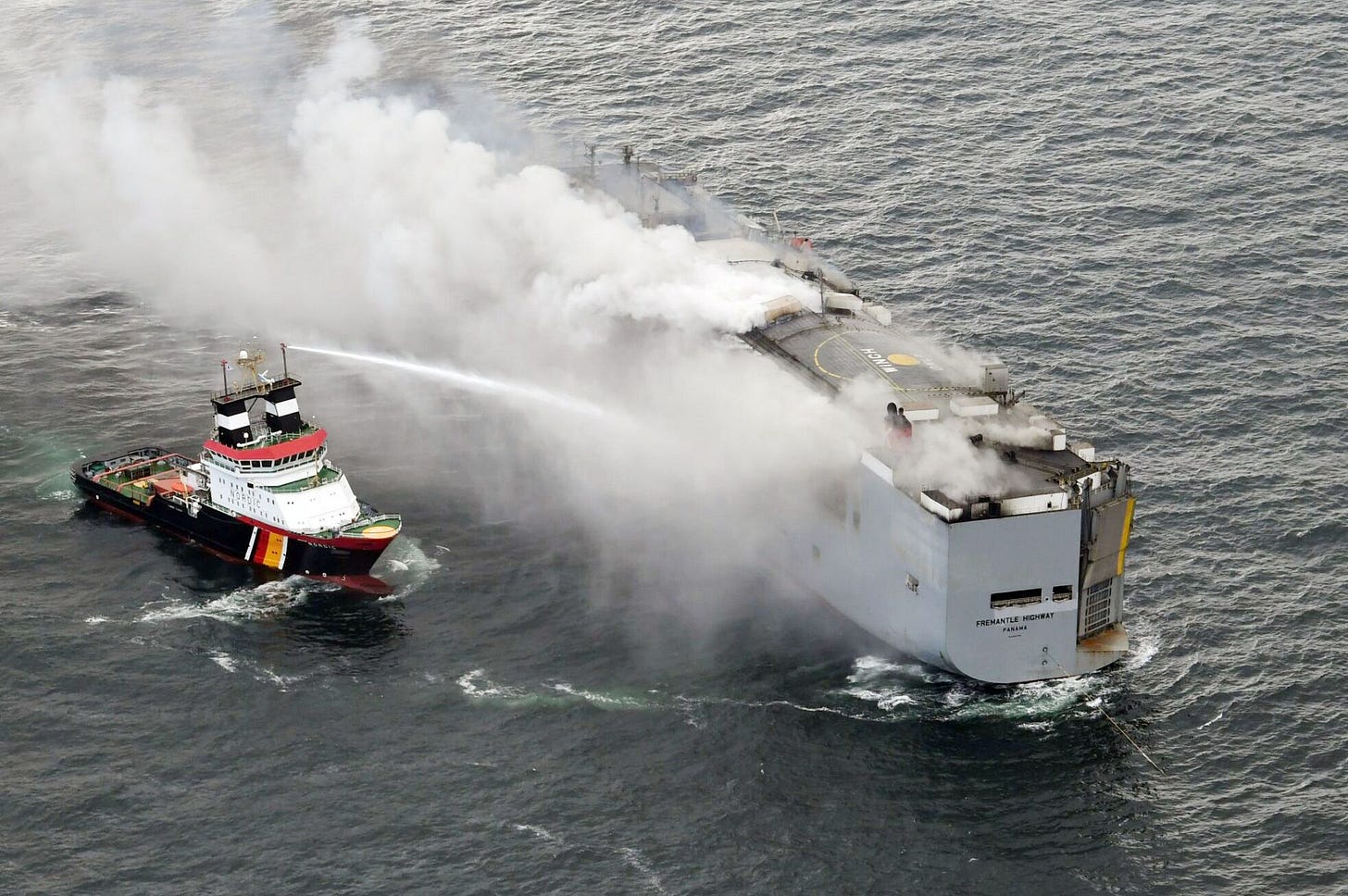Cargo Ship Disaster Facts: Debunking Myths and Misinformation Around Car Fires and Sinkings
Social media myths blame electric cars for recent ship fires, but looking at data on cargo ship disasters shows that's false. We break down the facts on real causes.
In today's digital age, misinformation spreads like wildfire. Recent chatter on social media has pointed fingers at an electric car as the cause of a 2022 ship fire. However, the truth is far from this claim. Let's set the record straight and delve into the real reasons behind some of the most notable ship disasters over the past two decades.
Introduction: The Power and Peril of Misinformation
With the rise of social media platforms, it's easier than ever for rumours to gain traction. A recent example is the claim that a ship fire in 2022 was caused by an 'electric car catching fire'. Interestingly, this ship wasn't even transporting a single electric vehicle. So, where does the truth lie?
A Historical Overview: Ship Disasters from 2002-2023
2002: The Tricolore's Unfortunate End
In a tragic incident, The Tricolore, a renowned car carrier, met its end in the English Channel. A collision led to the sinking of this ship, resulting in the loss of 2871 cars, including BMWs, Volvos, and Saabs. The aftermath saw the ship being segmented into nine parts and subsequently recycled.
2004: The Hyundai 105's Collision
Off the coast of Singapore, the Hyundai 105 faced a devastating collision with a tanker. This accident led to the sinking of the ship along with 4191 new Hyundai and Kia cars and an additional 1000 used Japanese vehicles.
2006: The Cougar Ace's Ballast Blunder
While adjusting its ballast water near the Aleutian Islands, The Cougar Ace tipped over. Even though the ship was eventually righted, all 4700 Mazdas onboard met a grim fate - they were crushed and recycled.
2012: The Baltic Ace's Fatal Encounter
A collision with a container ship off Rotterdam's coast spelt doom for The Baltic Ace. This tragic event led to the loss of 11 sailors and a cargo of 1400 Mitsubishis.
2015: The Hoegh Osaka's Imbalance
Due to an imbalance caused by insufficient ballast water and a miscalculation in loading heavy Land Rovers on the upper decks, The Hoegh Osaka tipped over. Fortunately, the ship was righted, and its cargo of 1400 vehicles was safely unloaded.
2016: The Modern Express's Windy Woes
Facing heavy winds in the Bay of Biscay, The Modern Express tipped over. The ship's cargo, consisting of earth-moving equipment and logs, was later unloaded in Bilbao, Spain.
2019: The Golden Ray's Capsizing
The Golden Ray capsized off Georgia's coast due to an imbalance caused by insufficient water ballast. This incident led to the complete loss of the ship and its cargo of 4200 Kias and Hyundais.
2022: The Felicity Ace's Fiery Fate
The Felicity Ace, transporting luxury cars like Volkswagens, Porsches, Bentleys, and Lamborghinis, caught fire near the Azores, off the Portuguese coast. It's crucial to note that none of these vehicles were electric.
2023: The Fremantle Highway's Mystery
The Fremantle Highway, carrying nearly 3,000 vehicles, witnessed a fire that reportedly started near an electric car. Investigations are ongoing to determine the true cause.
The Underlying Causes: Ballast and Balance
The stability of a ship is a critical factor in its safety and operational efficiency. Two key elements that significantly influence a ship's stability are its ballast and balance.
The Role of Ballast
Ballast, typically in the form of seawater, is stored in special tanks in a ship's hull. Its primary purpose is to provide stability to the vessel. By adjusting the amount and distribution of ballast, a ship can maintain its balance, even in adverse weather conditions or when carrying heavy cargo(1).
However, managing ballast is a delicate process. Ships need to change out the water ballast in their holds as they approach different ports to avoid contaminating certain coastal environments with foreign ballast water containing non-native sea life. If the old water is not replaced at the same rate and time as it is being pumped out, it can lead to instability and, in extreme cases, tipping or capsizing of the ship(1).
The Importance of Proper Loading
In addition to ballast, the way a ship is loaded can significantly impact its stability. If too many heavy cars are parked on upper decks and not enough cars on lower decks, the ship can become top-heavy and tip over. This was the case with the Hoegh Osaka in 2015, where an imbalance in loading led to the ship tipping over(2).
Moreover, loading practices also need to consider the distribution of weight from bow to stern. An uneven weight distribution can lead to a ship listing or leaning to one side, which can further compromise stability(2).
The Bigger Picture
While these factors play a significant role, it's important to note that ship disasters often result from a combination of factors. Insufficient or improperly managed ballast, poor loading practices, adverse weather conditions, and human error can all contribute to these incidents. As such, maintaining ship stability requires a comprehensive approach that considers all these elements.
Conclusion: Separating Fact from Fiction
While collisions and other unforeseen circumstances can lead to ship disasters, it's essential to base our understanding on facts. Only one of the eight incidents before 2023 was linked to a car fire, and that too, an internal combustion engine (ICE) car. As responsible consumers of information, we must separate fact from fiction and ensure that we're not swayed by baseless rumours.



EV FIRE GENIUS!!!
🤣🤣🤣🤣🤣🤣🤣